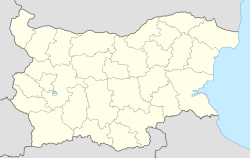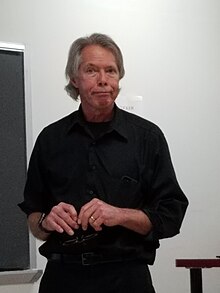단선 송전선로
Single-wire transmission line단와이어 송전선(또는 단와이어 방식)은 하나의 전기 도체만을 사용하여 전력이나 신호를 전송하는 방법이다. 이는 완전한 회로를 제공하는 한 쌍의 와이어 또는 그러한 목적을 위해 최소한 두 개의 도체를 포함하는 전기 케이블의 일반적인 사용과는 대조적이다.
단일 와이어 전송 라인은 이 기사에서 다루지 않는 단일 와이어 접지 리턴 시스템과 동일하지 않다. 후자 시스템은 지면을 통과하는 리턴 전류에 의존하며, 지면을 접지 단자 전극 사이의 두 번째 도체로 사용한다. 단일 와이어 전송 라인에는 어떤 형태의 2차 도체가 없다.
역사
1780년대 초기에 루이지 갈바니는 처음으로 개구리 다리가 경련을 일으키게 하는 정전기의 영향을 관찰했고, 완전한 회로를 포함하는 개구리와 특정한 금속 접촉으로 인해 발생하는 동일한 효과를 관찰했다. 후자의 효과는 알레산드로 볼타에 의해 볼타(배터리)라고 알려지게 될 것에 의해 의도치 않게 생성되는 전류로 올바르게 이해되었다. 그는 전류의 실질이 전혀 이해되지 않았음에도 불구하고, 그러한 전류는 전기를 전도하기 위해 완전한 회로를 필요로 한다는 것을 이해했다(단 1세기 후에야 전자가 발견될 것이다). 이후의 모든 전기 모터, 조명 등의 개발은 완전한 회로의 원리에 의존하여, 일반적으로 한 쌍의 전선을 수반하지만 때로는 지면을 제2차 도체(상업용 전신기처럼)로 사용하기도 한다.
19세기 말에 니콜라 테슬라는 공명에 맞춘 전기 네트워크를 사용함으로써 리턴 와이어가 필요 없이 단일 도체만을 사용하여 전력을 전송할 수 있다는 것을 증명했다. 이것은 "반환 없이 하나의 전선을 통한 전기 에너지의 전달"[1][2]이라고 언급되었다.
In 1891, 1892, and 1893 demonstration lectures with electrical oscillators before the AIEE at Columbia College, N.Y.C., the IEE, London, the Franklin Institute, Philadelphia, and National Electric Light Association, St. Louis, it was shown that electric motors and single-terminal incandescent lamps can be operated through a single conductor without a return wire. Although apparently lacking a complete circuit, such a topology effectively obtains a return circuit by virtue of the load's self-capacitance and parasitic capacitance.[3][4]
Thus coils of the proper dimensions might be connected each with only one of its ends to the mains from a machine of low E. M. F., and though the circuit of the machine would not be closed in the ordinary acceptance of the term, yet the machine might be burned out if a proper resonance effect would be obtained.[5]
The final reference to "burning out" a machine was to emphasize the ability of such a system to transmit a large power given a proper impedance match, as can be obtained through electrical resonance.
Theory
This observation has been rediscovered several times, and described, for instance, in a 1993 patent.[6] Single-wire transmission in this sense is not possible using direct current and totally impractical for low frequency alternating currents such as the standard 50–60 Hz power line frequencies. At much higher frequencies, however, it is possible for the return circuit (which would normally be connected through a second wire) to utilize the self- and parasitic capacitance of a large conductive object, perhaps the housing of the load itself. Although the self-capacitance of even large objects is rather small in ordinary terms, as Tesla himself appreciated it is possible to resonate that capacitance using a sufficiently large inductor (depending on the frequency used), in which case the large reactance of that capacitance is cancelled out. This allows a large current to flow (and a large power to be supplied to the load) without requiring an extremely high voltage source. Although this method of power transmission has long been understood, it is not clear whether there has been any commercial application of this principle for power transmission.
단도체 도파관
일찍이 1899년에 아놀드 소머펠트는 단일 원통형 도체(와이어)를 이용하여 무선 주파수 에너지를 표면파로 전파하는 것을 예측하는 논문을[7] 발표하였다. 소머펠트의 "와이어파"는 전파 모드로서 이론적인 관심사였지만, 이는 실용적 응용은 고사하고 어떤 실험에 대해서도 충분히 높은 무선 주파수의 생성을 위해 기술이 존재하기 수십 년 전의 일이었다. 더욱이, 이 솔루션은 에너지를 결합하는 것에 대한 고려 없이 무한 전송 라인을 설명했다.
그러나 특히 실제적인 관심사는 동축 케이블의 중심 도체와 동일한 와이어를 사용하는 것에 비해 상당히 낮은 신호 감쇠의 예측이었다. 전류가 전선을 통한 고전류 때문이라는 이전의 설명과는 달리, 이 경우 전도체 자체의 전류는 전자파(전파)의 형태로 전달되는 에너지가 훨씬 작다. 그러나 이 경우 전선의 존재는 그 파동을 방사하기보다는 부하를 향해 유도하는 작용을 한다.
특히 동축(또는 다른 2와이어 전송선)을 사용하는 것에 비해 옴손실의 감소는 이러한 손실이 매우 큰 고주파수에서 유리하다. 실제로, 마이크로파 주파수 이하의 이 전송 모드를 사용하는 것은 전선 주변의 필드 패턴이 매우 확장되어 있기 때문에 매우 문제가 있다. 도체를 따라 표면 파동과 관련된 장은 많은 도체 직경까지 유의하기 때문에 이러한 영역에 우발적으로 존재하는 금속 또는 심지어 유전 물질은 모드의 전파를 왜곡하고 일반적으로 전파 손실을 증가시킬 것이다. 가로 방향에서 이 치수에 대한 파장의 의존성은 없지만, 전파 방향에서 전파 모드를 완전하게 지지하려면 도체 길이의 최소 반파를 가져야 한다. 이러한 이유로, 그리고 약 1950년 이전에 이용할 수 있는 주파수에서, 그러한 전송의 실질적인 단점은 와이어의 유한 전도성으로 인한 감소된 손실보다 훨씬 컸다.
구바우 선
1950년 게오르크 구보는 소머펠트가 와이어를 따라 표면파 모드를 발견했지만 실용성을 높일 목적으로 다시 연구했다.[8] 한 가지 주요 목표는 도체를 둘러싼 영역의 범위를 줄여 그러한 와이어가 불합리하게 큰 간격을 요구하지 않도록 하는 것이었다. 또 다른 문제는 소머펠트의 파동이 정확히 빛의 속도(또는 공기로 둘러싸인 와이어에 대해 공기 중의 빛의 약간 낮은 속도)로 전파되었다는 것이었다. 그것은 방사능 손실이 있을 것이라는 것을 의미했다. 직선선은 유도 모드에서 복사 전력을 강탈하는 긴 와이어 안테나 역할을 한다. 만약 전파속도가 빛의 속도 이하로 감소할 수 있다면 주변 장은 전류가 되며, 따라서 전선을 둘러싼 영역에서 멀리 떨어진 곳으로 에너지를 전파할 수 없다.
구보는 나사선을 사용하여 얻을 수 있는 것과 같이 표면이 (정확한 실린더가 아닌) 구조화된 와이어의 유익한 효과를 조사했다. 더욱 의미심장하게, 구보는 전선을 둘러싸고 있는 유전층 적용을 제안했다. 유전체의 다소 얇은 층(파장에 상대적)이라도 전파속도를 빛의 속도 이하로 충분히 감소시켜 긴 직선선의 표면을 따라 표면파에서 발생하는 방사선 손실을 제거한다. 또한 이 수정은 와이어를 둘러싸고 있는 전자기장의 발자국을 크게 감소시켜 다른 실질적인 문제를 해결하는 효과를 가져왔다.[9]
마침내 구보는 그러한 송전선에서 전기 에너지를 발사(수신)하는 방법을 발명했다. 특허받은[10] 구바우 라인(또는 "G 라인")은 유전체로 코팅된 단일 도체로 구성된다. 양 끝에는 송신선이 통과하는 중앙에 구멍이 뚫린 넓은 디스크가 있다. 디스크는 원뿔의 기저부가 될 수 있으며, 원뿔의 좁은 끝은 일반적으로 동축 공급 라인의 실드에 연결되고, 전송 라인 자체는 동축의 중심 도체에 연결된다.
구보의 설계에서 주변 영역의 범위가 축소되어도, 그러한 기기는 UHF 주파수 이상에서만 실용화된다. 금속 손실이 아직 더 큰 테라헤르츠 주파수에서의 기술 발전으로 표면파 및 구바우 선을 이용한 전송의 사용은 유망한 것으로 보인다.[11]
E-라인
2003년부터 2008년까지 소머펠트의 오리지널 베어(코팅되지 않은) 와이어를 이용한 시스템 특허 출원이 이루어졌지만, 구보가 개발한 것과 유사한 발사기를 채용했다.[12][13] 2009년까지 E라인(E-Line)이라는 이름으로 추진되었다.[14] 따라서 G-라인에 대한 Goubau의 비방사선에 필요한 도체의 유전체 코팅 또는 특수 조건화에 의해 결과파 속도가 감소되지 않는다. 이 선은 이전에 인식되지 않았던 횡자기파(TM)를 통해 완전히 비방사성, 전파되는 에너지라고 한다. 이 경우에 의도된 적용은 특히 통신 목적으로 기존의 전력선을 이용하여 높은 정보 전송률 채널을 만드는 것이다. 이것은 기존의 단일 또는 다중 과전원 도체를 사용하여 50 MHz 이하에서 20 GHz 이상으로 주파수를 전송하기 위해 제안되었다.[citation needed]
도체의 파동 속도를 낮추기 위해 외부 유전체나 특수한 표면 조건화를 갖춘 도체를 필요로 하는 구보 라인은 오래 전부터 알려져 있었지만, 이 보다 일반적인 횡자기(TM) 모드는 이러한 제한이 없다. E-Line은 단일 도체 주위의 공간에 전파되는 방사상 대칭파를 커플링하기 위해 발사대를 사용하는 구보 라인과 유사하지만, 광택이 있고 전혀 기능을 하지 않는 도체를 포함한 절연 없는 도체에서 작동할 수 있다는 점에서 다르다. 파동의 전파속도는 감소되지 않으며 기본적으로 도체가 전혀 없을 때 동일한 매체로 이동하는 파동의 속도다. 더욱이 실용 발사체는 파장의 큰 부분인 단면을 가질 필요가 없다. 파동과 관련된 에너지는 전파 신호의 파장보다는 도체의 직경과 기하학에 의해 결정되는 영역에 국한된다. Launchor는 도체를 따라 발사기 길이로 제한된 저주파 컷오프를 가진다.
The behavior of such a system is independent of the operating frequency, but is dependent upon details of the power conductor and its environment. "A nearby conductor other than the line itself may provide a termination point and thereby reduce energy coupled into the TM wave".[15] (This has relevance to Tesla's 1891-1893 table-top demonstrations.) As for any transmission line, at very high frequencies, the increased losses of the metal conductor, despite the advantage obtained using the surface wave mode, are increased, however because conductor losses are inversely proportional to the square of line impedance, this mode can achieve much lower losses, no more than a few percent of a 50 ohm coaxial line having the same center conductor. The effects of line taps, bends, insulators and other impairments normally found on power distribution systems have been described as "predictable and manageable".[15] Depending on these factors, the resulting insertion loss, along with the transmitted power and receiver sensitivity, will determine the maximum distance attained by such a system. Like CATV systems, an increased end-to-end communications path can be obtained through the use of repeaters.[citation needed]
To take advantage of existing lines, the conical launcher elements are built with a slot through the cone, so that they can be easily fitted over an existing power line (rather than having to be threaded through the cone). Systems can employ a launch device of only 15–20 cm in diameter from upper HF through millimeter wavelengths as long as the launch has sufficient length along the conductor. Generally structures at least one quarter wavelength long are required. A one meter long launcher with a 10 cm opening can provide under 2 dB of insertion loss from 130 MHz through many GHz.[16] Systems built in this manner can provide both significant energy transfer e. g. providing motive power for electric helicopters acting as aerostats, at the same time they provide low loss transmission line connection to light weight, high altitude antennas.[17]
See also
References
- ^ "Why did Tesla make his coil in the first place? . . . do they have any practical purposes?," 21st Century Books.
- ^ Nikola Tesla, "Talking with the Planets (1901)". Collier's Weekly, February 19, 1901, pp. 4–5.
"Some ten years ago, I recognized the fact that to convey electric currents to a distance it was not at all necessary to employ a return wire, but that any amount of energy might be transmitted by using a single wire. I illustrated this principle by numerous experiments, which, at that time, excited considerable attention among scientific men."
- ^ Experiments with Alternate Currents of Very High Frequency and Their Application to Methods of Artificial Illumination, American Institute of Electrical Engineers, Columbia College, N.Y., May 20, 1891.
- ^ Experiments with Alternate Currents of High Potential and High Frequency, Institution of Electrical Engineers Address, London, February 1892.
- ^ On Light and Other High Frequency Phenomena, Franklin Institute, Philadelphia, February 1893, and National Electric Light Association, St. Louis, March 1893.
- ^ U.S. Patent 6,104,107, "Method and apparatus for single line electrical transmission". Avramenko, et al.
- ^ A. Sommerfeld, Ann. Phys. u. Chemie (Neue Folge) 67-1, 233 (1899)
- ^ Georg Goubau, "Surface waves and their Application to Transmission Lines," Journal of Applied Physics, Volume 21, Nov. (1950)
- ^ U.S. Patent 2,685,068, "Surface wave transmission line". George J. E. Goubau
- ^ U.S. Patent 2,921,277, "Launching and receiving of surface waves". George J. E. Goubau
- ^ Tahsin Akalin, "Single-wire transmission lines at terahertz frequencies", IEEE Transactions on Microwave Theory and Techniques (IEEE-MTT), Volume 54, Issue 6, June 2006 Page(s): 2762 - 2767
- ^ U.S. Patent 7,009,471, "Method and apparatus for launching a surfacewave onto a single conductor transmission line using a slotted flared cone". Glenn E. Elmore
- ^ U.S. Patent 7,567,154, " Surface wave transmission system over a single conductor having E-fields terminating along the conductor " Glenn E. Elmore
- ^ "E-Line". Corridor Systems Inc. 2010. Retrieved November 6, 2013.
- ^ a b Glenn Elmore (July 27, 2009). "Introduction to the Propagating TM Wave on a Single Conductor" (PDF). Corridor Systems. Retrieved November 6, 2013.
- ^ Glenn Elmore (February 6, 2016). "Real Power Transmitted over a 0.32mm Wire". Glenn Elmore. Archived from the original on 2021-12-12. Retrieved September 1, 2016.
- ^ Glenn Elmore (February 6, 2016). "SWTL Powered Drone/Antenna". Glenn Elmore. Retrieved September 1, 2016.


